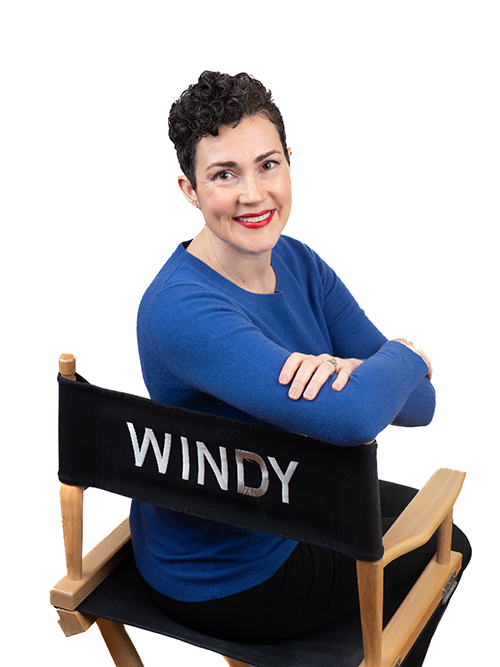We celebrated the digital release of “Mary Janes: The Women of Weed” on AppleTV, Google Play, Vudu and Vimeo with a Virtual Red Carpet Event in April 2021. In another time, we would have celebrated with an in-person event; however, the on-going COVID-19 pandemic made that impossible. Instead we decided to embrace the virtual event wave and host a free Zoom event for our fans. Not only did this save money we would have spent on space rentals and catering, but it also allowed us to invite fans from all over the world.
Below are some tips we learned along the way. They apply to whatever remote platform you choose for a virtual celebration.
1. Design the User Experience (UX):
“Zoom Burnout” is real, so think about these questions as you design the event’s user experience.
- What do you want the audience to get out of the event?
- What are the key takeaways, i.e. Is there a call-to-action or special offer for attending?
- Will there be a “Waiting Room” for people to be admitted to the event or will it start right away?
- How will the event begin, i.e. Will there be music, a welcome screen, announcements, or a “Tech Check” for the audience to mute mics and turn off video?
- What content is the audience seeing and hearing during the event, i.e. Is there music, videos, a slide deck?
- How do you want them to interact during the event, i.e. Do you want them to ask questions in the chat or use reaction buttons (emojis) to engage with the content?
- How will the event end, i.e. Will there be music, a thank you screen, a special offer, or discount code?
Designing the user experience also includes being mindful of the speakers’ experience.
- How will you promote them?
- What content do you want them to share?
- How long will they speak?
- Is there a space for them to gather, i.e. a Breakout Room used as either a “Green Room” or “Backstage” Area?
In our case, we designed the audience user experience so that it was free for fans to RSVP. We asked them to use the reaction buttons (emojis) to engage with content, and we offered them a “Red Carpet Special” discount as a Thank You gift for attending.
For our 20+ speakers, we asked them for headshots, short bios (1-2 sentences) and links to promote their work. This content enabled us to promote them on social media before the event, introduce them succinctly during the event, and add supplemental information (i.e. links to their websites) into the chat while they spoke.
We also provided a “Green Room” for cast members that was open before, during, and after the event. Many of the cast had not seen one another in a long time. Not only did this private space allow them to reconnect and celebrate the occasion, but it also gave our Tech Team time to run through last-minute changes and announcements separately from the audience.
2. Recruit a Team
It takes a team to produce a film, and it takes a team to promote your film. By now, I hope you know the “hats” you prefer to wear during Production and can delegate the rest. If you’re still struggling with delegating, producing a virtual event is an opportunity to practice.
In my case, as the film’s director I was the event’s MC. During event pre-production, I wrote the script, coordinated speakers, and ran the rehearsals. During the event I was on-camera, so I needed help on the back-end to make everything run smoothly.
I ended up recruiting 5 team members, which consisted of:
- 2 Event Producers, one in the Main Room and one in the Green Room
- a Social Media Coordinator, who doubled as our Zoom Chat Coordinator, dropping pre-written content and links into the chat according to the script [see below]
- a Publicist to send press releases and interface with media who attended the virtual event
- a Web Designer to update the website for the virtual event and the digital release
You can change these titles/roles as needed for your event, but I share them to encourage you *not* to wear all these hats yourself. Delegate the responsibilities and recruit others to fill in the gaps if needed so you can provide a high quality event for your audience.
3. Write a Script (aka “Show Flow”)
Knowing the user experience (UX) helps you write a script, also known as a “Show Flow” when you add timings. I suggest sharing a Rough Draft with your speakers ahead of time to get their feedback. They may request changes in their introductions, but more often they will offer suggestions about the questions or content to help you achieve the desired UX. It will also help them think ahead of time about what they want to say, including the links to share in the chat, and to stay within their time limit.
4. Rehearse and Time Your Presentation
Your audience is pulled in a million directions these days, so if they are honoring you with the gift of their time, use it mindfully. Time the content and transitions ahead of time; trim it where needed so you don’t go over.
When you rehearse the event, I suggest breaking the script into smaller sections. In our case, we had 7 groups consisting of a “Red Carpet Correspondent” plus 3-4 cast members. Each group had 45 minutes to rehearse their section. While we sent the Rough Draft for the Show Flow ahead of time, I screen-shared it during our Zoom rehearsal so all the speakers could see how their section flowed. We made the requested edits during rehearsal and then we ran through the section twice: once as a “Stumble Through”, where we paused for tech transitions and issues as they came up; and then again as a “Dress Rehearsal”, where we performed as if we were live and timed it.
This allowed the whole team (the Tech Team and the speakers) to get comfortable with each other, the tech transitions, and the content within their allotted time. It also gave us a shared experience we could reference when we needed to make last-minute content changes the day of the event.
5. Follow Up
If you follow the steps above, you will hopefully produce a high-quality virtual event that inspires your audience. So what comes next? Think about how and when you will follow up with attendees.
In our case, we ended our event with two requests: 1) watch the film and 2) share it on social media. We also provided a discount code for all the attendees, as a thank you for attending. While I said it in the presentation, and we share the code in the chat, we also emailed it to our email list and posted it on social media. People typically need to see it, hear it, and say it a minimum of three times to remember. Our event follow-up was key to converting a free online event into a sales opportunity.
– – – – –
I hope you found these tips useful. Join me next time for a tips on how to direct a remote interview for film or digital content.

